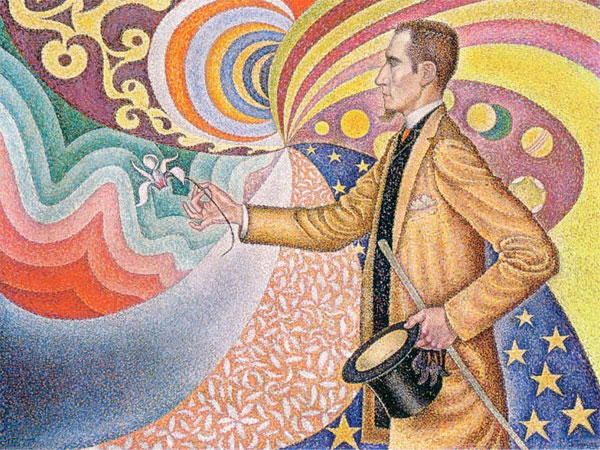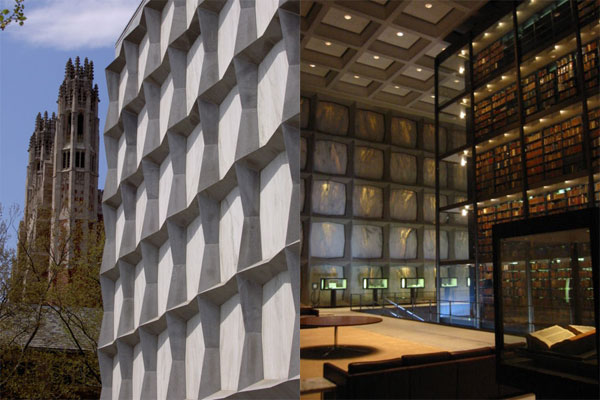I spent the weekend before last at the Center for Book Arts as part of their Fine Press Publishing Seminar for Emerging Writers. There I was taught to set type; not, perhaps, exactly what you’d expect from someone writing for a blog devoted to new technology. Robert Bringhurst, speaking about typography a couple years back, noted that one of typography’s virtues in the modern world is its status as a “mature technology”; as such, it can serve as a useful measuring stick for those emerging. A chance to think, again, about how books are made: a return to the roots of publishing technology might well illuminate the way we think about the present and future of the book.
* * * * *
I’ve been involved with various aspects of making books – from writing to production – for just over a decade now. In a sense, this isn’t very long – all the books I’ve ever been involved with have gone through a computer – but it’s long enough to note how changes in technology affect the way that books are made. Technology’s changed rapidly over the last decade; I know that my ability to think through them has barely kept up. An arbitrary chronology, then, of my personal history with publishing technology.
The first book I was involved in was Let’s Go Ireland 1998, for which I served as an associate editor in the summer of 1999. At that point, Let’s Go researcher/writers were sent to the field with a copious supply of lined paper and a two copies of the previous year’s book; they cut one copy up and glued it to sheets of paper with hand-written changes, which were then mailed back to the office in Cambridge. A great deal of the associate editor’s job was to type in the changes to the previous years’ book; if you were lucky, typists could be hired to take care of that dirty work. I was not, it goes without saying, a very good typist; my mind tended to drift unless I were re-editing the text. A lot of bad jokes found their way into the book; waves of further editing combed some of them out and let others in. The final text printed that fall bore some resemblance to what the researcher had written, but it was as much a product of the various editors who worked on the book.
The next summer I found myself back at Let’s Go; for lack of anything better to do and a misguided personal masochism I became the Production Manager, which meant (at that point in time) that I oversaw the computer network and the typesetting of the series. Let’s Go, at that point, was a weirdly forward-looking publishing venture in that the books were entirely edited and typeset before they were handed over to St. Martin’s Press for printing and distribution. Because everything was done on an extremely tight schedule – books were constructed from start to finish over the course of a summer – editors were forced to edit in the program used for layout, Adobe FrameMaker, an application intended for creating industrial documentation. (This isn’t, it’s worth pointing out, the way most of the publishing industry works.) That summer, we began a program to give about half the researchers laptops – clunky beige beasts with almost no battery life – to work on; I believe they did their editing on Microsoft Word and mailed 3.5” disks back to the office, where the editors would convert them to Frame. A change happened there: those books were, in a sense, born digital. The translation of handwriting into text in a computer no longer happened. A word was typed in, transferred from computer to computer, shifted around on screen, and, if kept, sent to press, the same word, maybe.
Something ineffable was lost with the omission of the typist: to go from writing on paper to words on a screen, the word on the page has to travel through the eye of the typist, the brain, and down to the hand. The passage through the brain of the typist is an interesting one because it’s not necessarily perfect: the typist might simply let the word through, or improve the wording. Or the typist make a mistake – which did happen frequently. All travel guides are littered with mistakes; often mistakes were not the fault of a researcher’s inattentiveness or an editor’s mendaciousness but a typist’s poor transliteration. That was the argument I made the next year I applied to work at Let’s Go; a friend and I applied to research and edit the Rome book in Rome, rather then sending copy back to the office. Less transmissions, we argued, meant less mistakes. The argument was successful, and Christina and I spent the summer in Rome, writing directly in FrameMaker, editing each other’s work, and producing a book that we had almost exclusive control over, for better or worse.
It’s roughly that model which has become the dominant paradigm for most writing and publishing now: it’s rare that writing doesn’t start on a computer. The Internet (and, to a lesser extent, print-on-demand publishing services) mean that you can be your own publisher; you can edit yourself, if you feel the need. The layers that text needed to be sent through to be published have been flattened. There are good points to this and bad; in retrospect, the book we produced, full of scarcely disguised contempt for the backpackers we were ostensibly writing for, was nothing if not self-indulgent. An editor’s eye wouldn’t have hurt.
* * * * *
And so after a not inconsequential amount of time spent laying out books, I finally got around to learning to set type. (I don’t know that my backwardness is that unusual: with a copy of Quark or InDesign, you don’t actually need to know much of an education in graphic design to make a book.) Learning to set type is something self-consciously old-fashioned: it’s a technology that’s been replaced for all practical purposes. But looking at the world of metal type through the lens of current technology reveals things that may well have been hidden when it was dominant.
While it was suggested that the participants in the Emerging Writing Seminar might want to typeset their own Emerging Writing, I didn’t think any of my writing was worth setting in metal, so I set out to typeset some of Gertrude Stein. I’ve been making my way through her work lately, one of those over-obvious discoveries that you don’t make until too late, and I thought it would be interesting to lay out a few paragraphs of her writing. Stein’s writing is interesting to me because it forces the reader to slow down: it demands to be read aloud. There’s also a particular look to Stein’s work on a page: it has a concrete uniformness on the page that makes it recognizable as hers even when the words are illegible. Typesetting, I though, might be an interesting way to think through it, so I set myself to typeset a few paragraphs from “Orta or One Dancing”, her prose portrait of Isadora Duncan.
Typesetting, it turns out, is hard work: standing over a case of type and pulling out type to set in a compositing stick is exhausting in a way that a day of typing and clicking at a computer is not. A computer is, of course, designed to be a labor-saving device; still, it struck me as odd that the labor saved would be so emphatically physical. Choosing to work with Stein’s words didn’t make this any easier, as anyone with any sense might have foreseen: participles and repetitions blur together. Typesetting means that the text has to be copied out letter by letter: the typesetter looks at the manuscript, sees the next letter, pulls the piece of type out of the case, adds it to the line in the compositing stick. Mistakes are harder to correct than on a computer: as each line needs to be individually set, words in the wrong place mean that everything needs to be physically reshuffled. With the computer, we’ve become dependent upon copying and pasting: we take this for granted now, but it’s a relatively recent ability.
There’s no end of ways to go wrong with manual typesetting. With a computer, you type a word and it appears on a screen; with lead type, you add a word, and look at it to see if it appears correct in its backward state. Eventually you proof it on a press; individual pieces of type may be defective and need to be replaced. Lowercase bs are easily confused with ds when they’re mirrored in lead. Type can be put in upside-down; different fonts may have been mixed in the case of type you’re using. Spacing needs to be thought about: if your line of type doesn’t have exactly enough lead in it to fill it, letters may be wobbly. Ink needs attention. Paper width needs attention. After only four days of instruction, I’m sure I don’t know half of the other things that might go wrong. And at the end of it all, there’s the clean up: returning each letter to its precise place, a menial task that takes surprisingly long.
We think about precisely none of these things when using a computer. To an extent, this is great: we can think about the words and not worry about how they’re getting on the page. It’s a precocious world: you can type out a sentence and never have to think about it again. But there’s something appealing about a more altricial model, the luxury of spending two days with two paragraphs, even if it is two days of bumbling – one never spends that kind of time with a text any more. A degree of slowness is forced upon even the best manual typesetter: every letter must be considered, eye to brain to hand. With so much manual labor, it’s no surprise that there so many editorial layers existed: it’s a lot of work to fix a mistake in lead type. Last-minute revision isn’t something to be encouraged; when a manuscript arrived in the typesetter’s hands, it needs to be thoroughly finished.
Letterpress is the beginning of mechanical reproduction, but it’s still laughably inefficient: it’s still intimately connected to human labor. There’s a clue here, perhaps, to the long association between printers and progressive labor movements. A certain sense of compulsion comes from looking at a page of letterset type that doesn’t quite come, for me, from looking at something that’s photoset (as just about everything in print is now) or on a screen. It’s a sense of the physical work that went into it: somebody had to ink up a press and make those impressions on that sheet of paper. I’m not sure this is necessarily a universal reaction, although it is the same sort of response that I have when looking at something well painted knowing how hard it is to manipulate paint from my own experience. (I’m not arguing, of course, that technique by itself is an absolute indicator of value: a more uncharitable essayist could make the argument could be made that letterpress functions socially as a sort of scrapbooking for the blue states.) Maybe it’s a distrust of abstractions on my part: a website that looks like an enormous amount of work has been put into it may just as easily have stolen its content entirely from the real producers. There’s a comparable amount of work that goes into non-letterpressed text, but it’s invisible: a PDF file sent to Taiwan comes back as cartons of real books; back office workers labor for weeks or months to produce a website. In comparison, metal typesetting has a solidity to it: the knowledge that every letter has been individually handled, which is somehow comforting.
* * * * *
Nostalgia ineluctably works its way into any argument of this sort, and once it’s in it’s hard to pull it out. There’s something disappointing to me in both arguments blindly singing the praises of the unstoppable march of technology and those complaining that things used to be better; you see exactly this dichotomy in some of the comments this blog attracts. (Pynchon: “She had heard all about excluded middles; they were bad shit, to be avoided; and how had it ever happened here, with the chances once so good for diversity?”) A certain tension between past and present, between work and text, might be what’s needed.




